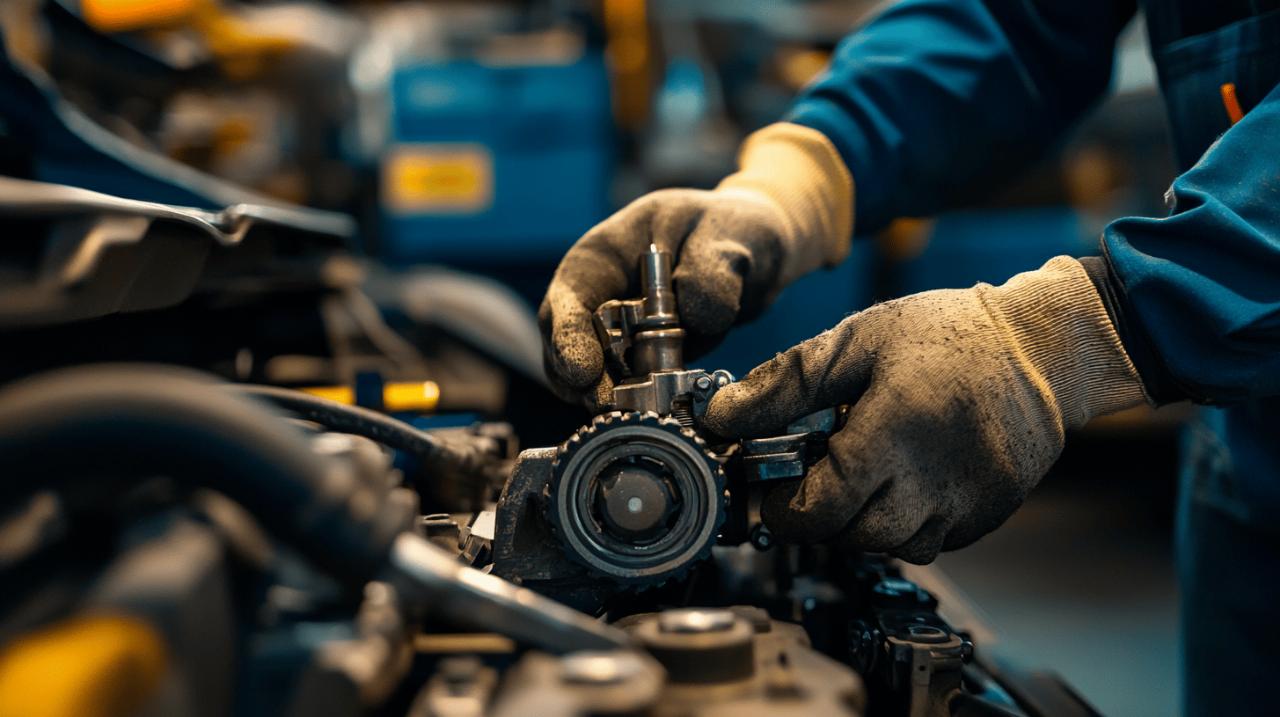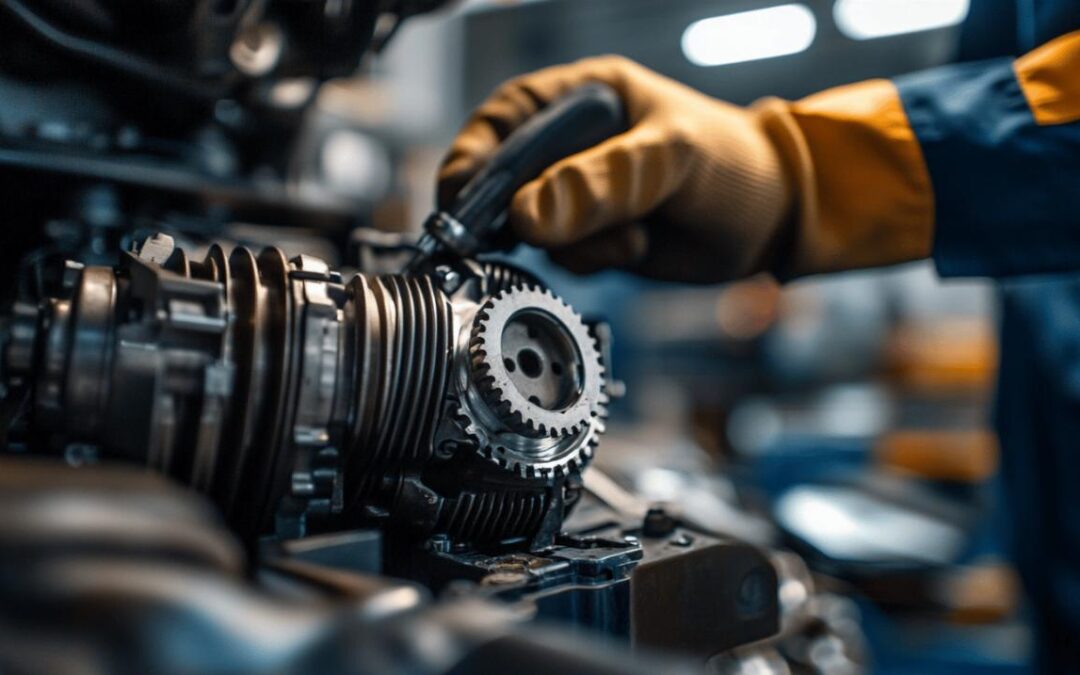Maintaining your vehicle’s clutch system is crucial for both safety and performance on the road. A failing clutch can leave you stranded when you least expect it, potentially requiring expensive repairs or even roadside assistance. Understanding the warning signs early can help you address issues before they become major problems. This comprehensive guide will help you identify the telltale indicators that your clutch may be starting to fail, allowing you to take preventative action before you’re faced with a complete breakdown. For more automotive guides and tips, visit https://www.autoregional24.de/, where you’ll find expert advice on vehicle maintenance and repairs.
Understanding clutch slippage issues
Clutch slippage is one of the most common problems drivers experience with manual transmission vehicles. This occurs when the clutch fails to properly engage the flywheel, causing a disconnect between engine power and your wheels. If you notice your engine revs increasing dramatically but your vehicle speed remains unchanged, especially when accelerating or driving uphill, you’re likely experiencing clutch slippage. This issue typically indicates worn clutch plates that can no longer create sufficient friction to transfer power effectively, often requiring professional vehicle servicing to resolve.
Why your engine revs without speed increase
When your clutch begins to slip, you’ll notice a distinct disconnect between your engine’s behaviour and vehicle movement. While pressing the accelerator, the engine RPM might jump significantly higher than normal without a corresponding increase in speed. This happens because the clutch plate surfaces have become too worn to properly grip the flywheel and pressure plate. The worn friction material can no longer handle the torque being transmitted from the engine, which is particularly noticeable during demanding driving conditions such as climbing hills or carrying heavy loads. Regular car maintenance checks can help identify these issues before they worsen.
Testing for Clutch Slippage at Home
You can perform a simple test to determine if your clutch is slipping without visiting a garage service. Start by parking on level ground and applying the handbrake. With the engine running and in third gear, slowly release the clutch pedal. In a properly functioning clutch system, the car should stall immediately. If instead the engine continues to run while the RPM drops but doesn’t stall, or if you notice the RPM fluctuating, your clutch is likely slipping. This simple diagnostic can save you from unexpected breakdowns and help determine whether you need to budget for clutch replacement in the near future.
Diagnosing clutch sticking problems
Clutch sticking manifests primarily through difficulty selecting gears. If you find yourself struggling to move the gear lever into position, or if the clutch pedal feels resistant to movement, you may be experiencing a sticky clutch. This common issue can be caused by several factors, including worn or contaminated hydraulic fluid, problems with the clutch cable, or issues with the clutch release mechanism. Unlike slippage, which typically results from wear to the friction surfaces, sticking problems often stem from mechanical or hydraulic system failures that affect how the clutch engages and disengages.
Common causes of difficult gear selection
Difficulty selecting gears can stem from several issues within your clutch system. One frequent culprit is a problem with the clutch hydraulic system, where air bubbles or degraded fluid prevent proper pressure transmission. Another potential cause is a worn or stretched clutch cable in vehicles with mechanical linkages. Additionally, the release bearing might be failing, causing incomplete clutch disengagement. Environmental factors can also play a role, as extreme temperatures can affect hydraulic fluid viscosity or cause components to expand or contract. Proper vehicle servicing includes checking these systems to ensure smooth operation and prevent more serious transmission damage.
When to Seek Professional Help for Sticking Clutches
While some minor clutch issues can be temporarily managed, a sticking clutch typically requires professional attention. You should consult a qualified mechanic when you notice consistent difficulty shifting gears, particularly if accompanied by grinding noises. Other signs that warrant immediate professional assessment include a clutch pedal that fails to return to position or complete inability to select certain gears. Many drivers with breakdown cover find that their policies include assistance with clutch-related issues, which can be invaluable if you experience sudden clutch failure while driving. Remember that continuing to drive with a sticking clutch can cause additional damage to your transmission system, potentially increasing repair costs.
Recognising clutch judder symptoms
Clutch judder refers to a distinct vibration or shaking sensation that occurs when engaging the clutch, typically during a pull-away from stationary. This juddering can range from a mild tremor to violent shaking that affects the entire vehicle. The sensation is most noticeable during the biting point of the clutch and often disappears once the clutch is fully engaged. This issue not only creates an uncomfortable driving experience but can also indicate significant problems with your clutch system that may lead to premature failure if not addressed through proper car maintenance.
What causes shaking when engaging the clutch
Several factors can cause the distinctive shaking sensation experienced during clutch engagement. Oil contamination is a common culprit, where engine or transmission oil leaks onto the clutch plate, compromising its friction properties. Warped pressure plates or flywheels can create uneven contact surfaces that produce juddering during engagement. Worn engine mounts may also amplify normal vibrations into noticeable judder. In some cases, particularly with high-performance vehicles, aftermarket clutch components may cause juddering if not properly matched to the vehicle specifications. Regular MOTs can help identify these issues before they progress to complete clutch failure.
Distinguishing clutch judder from other vibrations
Vehicles can experience various types of vibrations, making it important to correctly identify clutch judder from other issues. Unlike engine misfires which occur regardless of clutch position, clutch judder specifically appears during the engagement process. It also differs from wheel balance issues, which are most noticeable at certain speeds rather than during acceleration from a stop. Transmission vibrations typically persist throughout driving, while clutch judder is momentary. A key differentiating factor is that clutch judder will be most pronounced when the clutch is partially engaged and will usually diminish when the clutch pedal is either fully depressed or fully released. Understanding these distinctions can help when discussing problems with automotive brands’ service departments.
Identifying unusual clutch noises
Unusual noises when operating your clutch pedal often provide clear indicators of specific mechanical issues. These sounds can range from high-pitched squeals to low rumbling growls, each potentially signifying different problems within your clutch assembly. Paying close attention to when these noises occur can help diagnose the issue. For instance, noises present only when the pedal is depressed might indicate release bearing problems, while sounds that occur during pedal release could suggest pressure plate issues. Being attentive to these auditory warnings can help you address problems before they escalate to complete clutch failure.

Decoding different sounds: squeals, grinds and rumbles
Each distinct sound from your clutch system can help identify specific component failures. A high-pitched squeal when pressing the clutch pedal typically indicates a worn or dry release bearing that requires lubrication or replacement. Grinding noises often suggest misalignment between the clutch and flywheel or damaged friction surfaces on the clutch plate. A rumbling sound that disappears when the clutch pedal is depressed may indicate a worn pilot bearing or bushing. Clicking noises could point to issues with the pressure plate springs or release mechanism. These audio clues are invaluable diagnostic tools that experienced mechanics from reputable garage services can use to quickly identify clutch problems.
Linking specific noises to clutch components
Different components within the clutch system produce characteristic sounds when failing. The release bearing typically creates a high-pitched whining when depressing the clutch pedal, which disappears when fully engaged. A chattering or rattling noise when the engine is idle with the clutch engaged often points to issues with the clutch damper springs within the clutch disc. Grinding sounds during gear changes despite proper clutch pedal use may indicate worn synchromesh rings in the transmission rather than clutch problems. A knocking sound from the bellhousing area could suggest a worn pilot bearing or cracked flywheel. Understanding these correlations can help you communicate more effectively with mechanics when seeking car repairs.
Spotting changes in clutch pedal height
The position and feel of your clutch pedal can provide valuable insights into the health of your clutch system. As clutch components wear, the engagement point of the pedal often changes. You might notice the clutch engaging higher up in the pedal travel than previously, or conversely, very low near the floor. This change happens gradually as the friction material on the clutch plate wears down, requiring the pedal to travel further before engagement occurs. Monitoring these subtle changes can help you anticipate when clutch replacement might be necessary and prevent unexpected breakdown situations.
Measuring normal vs abnormal pedal position
Understanding what constitutes normal clutch pedal behaviour for your specific vehicle is essential for identifying problems early. In most properly functioning manual transmission vehicles, the clutch should engage at a point roughly midway through the pedal travel. To check your clutch pedal position, start with the engine off and press the pedal slowly, noting where you feel resistance. Then, with the engine running, slowly release the pedal from the floor and note where you feel the engagement point. If this biting point occurs very high or extremely low in the pedal travel, it likely indicates clutch wear. Many vehicle servicing schedules include checking clutch pedal free play as part of routine maintenance.
How clutch wear affects pedal feel
As your clutch wears over time, you’ll notice distinct changes in how the pedal feels underfoot. A clutch approaching the end of its life often creates a softer, spongier sensation when pressed. The resistance point may become less defined, making it harder to find the precise engagement point. Some drivers describe the pedal as feeling lighter or requiring less effort to depress. In hydraulic clutch systems, these changes can also result from air in the lines or fluid leaks, which might require bleeding rather than complete clutch replacement. Regular check-ups at driving school vehicles often focus on these subtle feedback changes to ensure learner vehicles maintain optimal clutch performance.
Addressing gear shifting difficulties
Difficulty shifting gears, particularly into first or reverse, often signals clutch system problems that require attention. If you find yourself needing to apply excessive force to the gear lever, or if gears grind despite fully depressing the clutch pedal, your clutch may not be fully disengaging from the flywheel. This issue can stem from various causes, including hydraulic system problems, mechanical linkage issues, or internal clutch damage. Addressing these shifting difficulties promptly can prevent damage to your transmission’s synchromesh rings and other components, potentially saving substantial repair costs.
First and reverse gear problems explained
First and reverse gears often present the most noticeable problems when clutch issues develop because these gears lack synchronizers found in other forward gears. When your clutch fails to fully disengage, the input shaft continues to spin even with the clutch pedal depressed, making it difficult to engage these non-synchronized gears smoothly. You might notice that allowing the vehicle to completely stop or double-clutching makes engagement easier, which confirms partial clutch disengagement as the likely culprit. This problem commonly stems from hydraulic system issues in modern vehicles, including master or slave cylinder failures, which vehicle insurance with comprehensive coverage might help address financially.
Preventative maintenance to maintain smooth shifting
Maintaining smooth gear shifts and extending clutch life requires proactive maintenance approaches. Regularly checking and replacing clutch hydraulic fluid according to manufacturer recommendations helps prevent system contamination that can cause shifting difficulties. Adjusting clutch pedal free play on vehicles with mechanical linkages ensures proper engagement and disengagement. Adopting gentle driving habits, such as avoiding riding the clutch pedal and fully depressing it when shifting, can significantly extend clutch lifespan beyond the typical range of 20,000 to 150,000 miles. For those interested in car buying advice, examining a used vehicle’s clutch operation should be a priority during test drives, as replacement costs can be substantial depending on the make and model.

